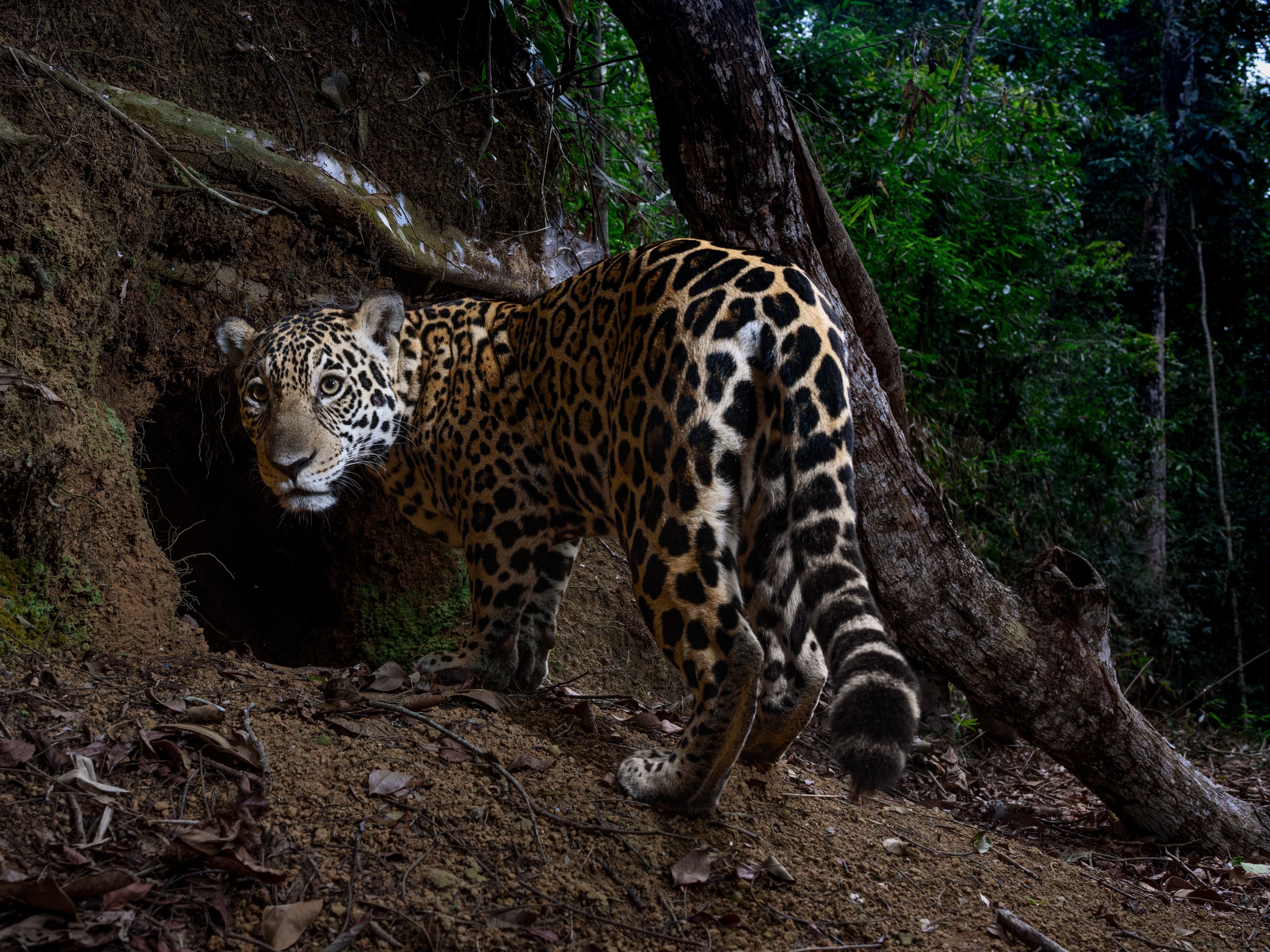
Geckos May Be Famously Sticky, but Here's What Stumps Them
Finding a gecko in her bathtub inspired our writer to wonder about the limitations of these clingy reptiles.
Here in Florida, the land of many a reptile, it's not so unusual to find a gecko in your bathtub.
When I did a few weeks ago, I noticed that despite its famously sticky feet, this tropical house gecko couldn’t get a grip. He just kept scrabbling in place on the side of the tub, like someone running up a down escalator. (Related: "How Geckos Stick: New Find May Lead to New Glue")
The bathroom high jinks inspired me to take an author's prerogative and ask, "What surfaces don’t geckos cling to?"
Use the Force
“What makes gecko feet stick are tiny hairlike structures on their toe pads called setae,” Robert Espinoza, a biologist at California State University, Northridge, says via email. These setae are divided at the tip into millions of nanoscale structures called spatulae. (Related: "A Colorful View of Incredibly Sticky Feet")
The spatulae exert an attraction between neutral molecules called a van der Waals force. Usually it’s very weak, but the number of spatulae put the foot in superclose contact with surfaces, giving them great dry adhesion.
But there’s more to their sticking power, says Duncan Irschick of the University of Massachusetts at Amherst.
Gecko foot tendons, which are attached to their skin, “stiffen the feet at contact and allow even distribution of forces,” thus providing “the real strength of the gecko feet,” he says via email.
Geckoes Unglued
But even such amazing feet have a few Achilles’ heels.
- When a gecko sheds its skin, “the old outer layer is breaking away from the supportive structures beneath, and the new setae have not been exposed yet,” says Anthony Patrick Russell, a biologist at the University of Calgary via email. That means their sticking ability is inhibited.
- Though geckos cling well on stiff, clean, dry surfaces, a wet surface—like you might find in a bathtub—can inhibit the setae’s clinging abilities. Water between the setae and the surface impairs the setae from making the necessary close contact with the surface, Irschick says. (See "Watery Gecko Grip Could Lead to Stickier Tape.")
- Nonstick coatings, such as what you'd find on frying pans, also undermine their clinging skills. That's because the van der Waals force requires polarization—a negative charge from one side and a positive charge from the other—that's lacking in such substances.
- Dust can be problematic as well. Setae will bond with the dust, not the surface, and if it slips, so will the gecko, Russell says.
- The same goes with "oil or very soft materials, [which] don't allow strong connection with setae,” thus loosening the gecko’s grip, Irschick says. In the outdoors, a soft surface might be a flimsy leaf—a stiffer leaf would allow more stickiness.
It’s just as well that there are some things geckos can’t get a grip on; no one likes it when you’re too clingy.
Weird Animal Question of the Week answers your questions every Saturday. If you have a question about the weird and wild animal world, tweet me, leave me a note or photo in the comments below, or find me on Facebook.





